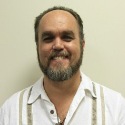 One of my favorite exercise and nutrition blogs is Theory to Practice, written by Keith Norris. He combines a solid grounding in the science of his topic, the geeky stuff, with a lot of practical experience and willingness to adapt to individual needs. The tension between the study of a topic and the subsequent conversion of ideas into actual work exists in all endeavors, something I have been thinking about as I prepare a training weekend for people interested in learning about restorative justice.
One of my favorite exercise and nutrition blogs is Theory to Practice, written by Keith Norris. He combines a solid grounding in the science of his topic, the geeky stuff, with a lot of practical experience and willingness to adapt to individual needs. The tension between the study of a topic and the subsequent conversion of ideas into actual work exists in all endeavors, something I have been thinking about as I prepare a training weekend for people interested in learning about restorative justice.
There is a purity in theory, a beauty reminiscent of the idealism of Plato and Pythagoras, that is fun to engage. Working in this realm is a kind of game, fun, yet ultimately empty without the willingness to get out in the world and get dirty. In a training environment we seek to balance this tension in a way that honors both aspects of reality. We want to transmit the underlying principles while also showing how things “really” work.
The thinker and developer of restorative approaches who I most respect is Dominic Barter. His understanding of the underlying dynamics of conflict, the part that I see as based on theory or principle, is as keen as anyone I have met or studied. At the same time he has done the work of engaging his community in the co-creation of restorative systems throughout Rio de Janeiro and the rest of Brazil, as well as working around the world to help others do the same.
Dominic stresses the importance of systems in restorative work, and of consciously engaging the ways in which communities respond to conflict, which are often hidden. The first step in this process is to “engage identified sources of power within the community. Reach agreement within the community on the use of restorative practice as a way of handling conflict.” As a theory this seems pretty straightforward, but how do we make it real?
A lot of the work done here in Athens, Ga., was accomplished by my friend and former boss, Gwen O’Looney. Gwen was the mayor of Athens for eight years, and is energetically involved in all sorts of projects in the city. She knows everyone in town it seems, and she was able to connect with important people in the judiciary, the prosecutor’s office, the public defender’s office, the police, related nonprofits and many other stakeholder groups.
Most importantly, she is engaged with the community most impacted by our work, the folks whose kids come into frequent contact with law enforcement and the courts.These neighborhoods are impacted by high unemployment, poverty, crime, trouble with schools and a host of other “social ills” that are too common. Most of the residents are black.
Gwen was perhaps uniquely qualified to bridge these two groups. She could talk about policy, budgets, sociology, evidence based practices, and other issues of concern to those with the elected or appointed responsibility for community safety and public policy. She could also talk with leaders in the neighborhoods, people without official power, but who nonetheless were vital in making the work real. Without their participation and buy-in, without owning the process, the program will ultimately fail.
These two groups seem distinct, and when we look through certain lenses they are indeed far apart.Yet the reality is that they, and everyone else in this town, are interconnected in a myriad of ways. What happens to a poor kid charged with a crime has an impact on all of us, though it may not be immediately obvious.
The heart of social change lies in the communities most affected. A top-down approach to solving problems that create crime and other societal ills will never ultimately work. The top-down, power-over structure has served to create these conditions. Only when we as a society can admit this to ourselves can we begin to collaboratively engage in deciding what to do next.
It is time to stop doing things to people and for people, and begin to work with people. That is the only route to sustainable change.


























